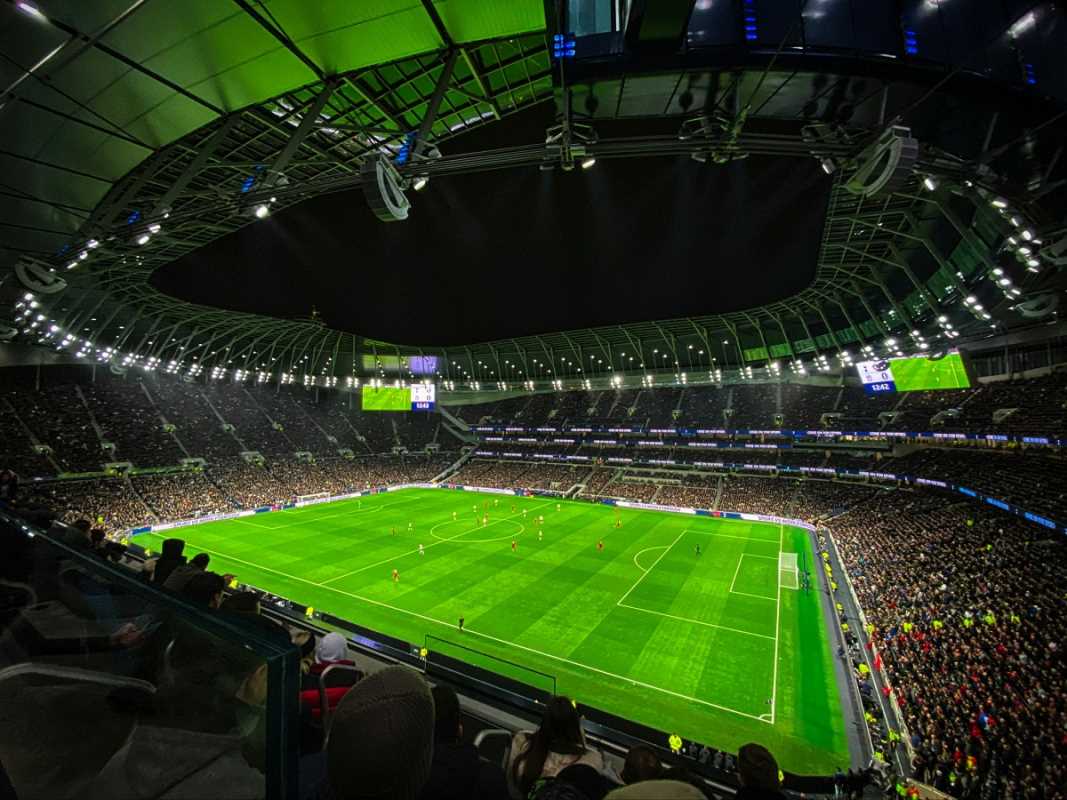Modern sports fans expect more than just watching a game; they want an unforgettable experience that blends entertainment, convenience, and cutting-edge technology. Enter the smart stadiums of 2024, where technology meets sports to deliver a next-level fan experience. With innovations powered by IoT, AI, AR/VR, and 5G, venues across the globe are transforming into hubs of connectivity and immersion. These advancements are improving everything from ticketing and navigation to in-stadium entertainment and personalized services, ensuring fans stay excited from the first whistle to the final play.
Cutting-Edge Technology Powering Smart Stadiums
Smart stadiums leverage a mix of advanced technologies to enhance every aspect of a fan’s game-day experience. Here's an overview of the game-changing innovations in 2024:
1. IoT Connectivity
The Internet of Things (IoT) plays a central role in creating a "connected" smart stadium. Sensors and smart devices communicate with each other to collect and analyze real-time data about the venue, crowd, and events. For fans, this means seamless services, including mobile check-ins, smart parking, and optimized food and beverage delivery to their seats.
Take the Allegiant Stadium in Las Vegas, home of the NFL’s Las Vegas Raiders. Through IoT-enabled systems, fans gain insights into real-time traffic updates, parking availability, and even restroom line lengths, reducing stress and letting them focus on the game.
2. AI-Powered Personalization
Artificial Intelligence (AI) helps stadiums learn and respond to fans’ preferences, creating a highly tailored experience. AI algorithms analyze data from ticket purchases, concessions, and even social media to predict fans' preferences.
For example, AI-assisted chatbots in venues like AT&T Stadium in Dallas allow fans to access real-time answers about game schedules, seat upgrades, and nearby food stands. Some stadium apps now use AI to guide ticket holders to the quickest routes inside, ensuring they never miss a key moment in the game.
3. Augmented Reality (AR) and Virtual Reality (VR)
AR and VR are redefining stadium entertainment, taking interactive experiences to new heights. Augmented reality overlays create enhanced visuals for fans, while VR allows immersive experiences for those unable to attend in person.
One great example is the Mercedes-Benz Stadium in Atlanta, which has integrated AR into its fan app. Using their mobile phones, fans can unlock exclusive 3D content, such as player stats, replays, and digital mascots that appear right in the stands. Imagine pointing your device at the field and seeing real-time statistics pop up in augmented reality—that’s the future of fan interaction.
4. 5G Connectivity
5G takes the fan experience to an entirely new level by delivering ultra-fast, low-latency internet connectivity. With stronger signal coverage, smart stadiums provide uninterrupted access to livestreams, augmented experiences, and fan engagement apps, even with tens of thousands of people on smartphones at the same time.
The Tottenham Hotspur Stadium in London is often hailed as the gold standard for 5G deployment. Fans can stream replays in HD, access live stats, and even place in-stadium deliveries, all without worrying about sluggish networks. This robust connectivity ensures fans remain immersed in the action, whether they’re at their seats or exploring the concourse.
Enhancing Fan Experiences
These cutting-edge technologies don’t just sound impressive on paper; they’re actively reshaping the way spectators engage with live events. Here’s how smart stadiums are changing the game for fans:
1. Seamless Ticketing and Entry
Gone are the days of fumbling with paper tickets and waiting in long lines to enter. Smart stadiums now offer digital ticketing systems powered by blockchain for resale protection and contactless entry, thanks to devices like NFC-enabled wristbands or mobile apps. Fans enjoy a streamlined entry process that’s faster and more secure than traditional methods.
The Levi’s Stadium in Santa Clara, California, employs such technology, allowing fans to scan their tickets from their phones and cross through entry gates in seconds. This smooth experience sets the tone for an enjoyable event from the moment fans arrive.
2. Effortless Navigation
Navigating a massive stadium can be daunting, especially at halftime when crowds surge. Smart stadium apps integrate interactive maps and GPS capabilities that guide fans to their seats, dining options, restrooms, and even merchandise stands with ease.
Take the State Farm Arena in Atlanta, for instance. The venue’s app can pinpoint a fan’s exact location and suggest the quickest paths to their destination to minimize wandering and queues.
3. Enhanced Food and Beverage Options
Everyone loves stadium snacks, but lengthy concession lines are a universal struggle. Smart venues are addressing this with mobile ordering systems that allow fans to place orders for delivery directly to their seats or at designated kiosks for speedy pickup. AI-driven systems also monitor concession demand to optimize staffing levels and reduce wait times.
A leader in this space is Gillette Stadium in Massachusetts, which uses IoT-enabled technology to track concession stand activity. These insights are used to notify fans of shorter lines at nearby kiosks and ensure food is hot and fresh upon delivery.
4. Immersive Entertainment
Fans don’t just come for the game; they seek entertainment that wow them during breaks and downtime. AR and VR-powered fan zones, real-time replays on massive 360-degree video boards, and holographic performances during halftime shows elevate the overall spectacle.
The SoFi Stadium in Los Angeles epitomizes this with its 70,000-square-foot, double-sided Infinity Screen. It provides fans with crystal-clear visuals, replays, stats, and hype-inducing cinematics, all synchronized perfectly with the live game.
5. Eco-Friendly Experiences
Smart stadiums are also implementing technologies to cater to environmentally conscious fans. LED lighting, automated climate controls, and solar energy integration contribute to improved sustainability, making fans feel good about attending an eco-friendly venue.
The Johan Cruijff Arena in Amsterdam takes sustainable operations to the next level with its energy storage system, which powers the stadium with solar-generated electricity and reduces its carbon footprint.
Leading Smart Stadiums of 2024
While numerous stadiums are adopting smart technologies, a few have stood out in 2024 as pioneers in enhancing fan experiences:
- Allegiant Stadium (Las Vegas, USA): A hub for IoT integration, Allegiant ensures fans stay informed about parking, crowd density, and in-stadium navigation.
- Tottenham Hotspur Stadium (London, UK): With its robust 5G network, it delivers seamless mobile connectivity for fans, enabling them to livestream and interact with AR apps.
- Hard Rock Stadium (Miami, USA): Incorporating AI and concierge-style apps, fans enjoy tailored food recommendations, ticket upgrades, and game-day itineraries.
These stadiums are setting benchmarks for what fans can anticipate in sports events now and in the future.
Looking Toward the Future
The development of smart stadiums is just the starting point, with new possibilities on the horizon. Innovations in facial recognition and biometric ticketing could further streamline entry processes, while AI advancements might enable fully autonomous concession services, from robot bartenders to on-demand D2C merchandise delivery.
More stadiums are expected to deepen fan engagement with hyper-realistic AR overlays, allowing live interaction with avatars of players or digitally rendered game histories. Fans at home won’t be left behind either, as virtual stadiums continue to evolve, allowing remote attendees to experience the live atmosphere through VR-enabled headsets.In addition to enhancing the fan experience, these advancements can also provide valuable data for teams and sponsors.
With smart stadiums, real-time analytics on crowd behavior, preferences, and spending patterns can be collected and analyzed to inform marketing strategies and improve overall revenue. Teams are now creating digital communities where fans can connect with each other and their favorite players, increasing brand loyalty and driving sales.
 (Image via
(Image via





